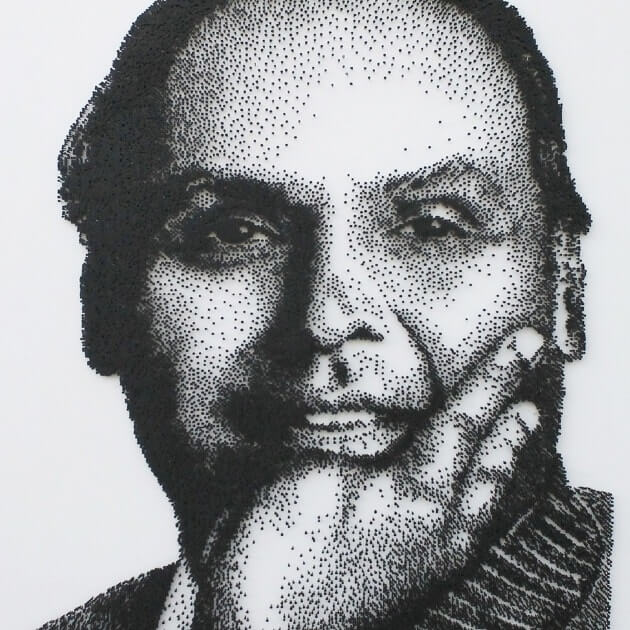



Prince Peter 25th May 2025 updated.
1986. Bombay.
In India, such public adulation had traditionally been the exclusive preserve of movie legends and victorious cricket stars.
For the 30,000 people thronging the vast, open grounds of Bombay's Cross Maidan, however, the portly gentleman waving to them was not a mere star. He was the deity who had opened up vistas that were considered impossible for them in an India of licenses and restrictions. He was the man who had believed in them and kept their faith - and in the process made many of them quite rich.
Amidst the throngs of cheering shareholders, of what would later be christened Reliance Industries, stood the man who had a vision of integrating his entrepreneurial empire in a way that the world had seldom seen.
The man was Dhirubhai Ambani.
Dhirubhai
Dhirajlal Hirachand Ambani's family was poor. His father's income as the village schoolteacher was barely enough to support the family of seven.
Dhirubhai seems to have indicated little enthusiasm for school education - despite the tutorial paternal presence!
Stories about Dhirubhai selling fried savories like pakodas and bhujias to pilgrims, near his hometown of Chorwad, Gujarat, India are the earliest recorded evidence of his entrepreneurial zeal.
At 16, as he would do many times later in life, he made a big move.
He dropped out of school and sailed the seas to seek his fortune abroad.
Aden, Yemen, was then the world's second busiest oil bunkering and trading port.
Young Dhirubhai started working at A. Besse & Co., a transcontinental distributor for Shell products - first as gas-station attendant, then as dispatch clerk, and later as manager of the company's filling station at the port.
It was at Aden that Ambani first experienced the heady excitement of commodity trading. At the Aden Souk, a young Ambani learnt the basics of markets, trading, and finance - through small-time trading in rice and sugar.
This experience would lay the foundation for his later entrepreneurial success. It also often landed him in trouble given his high risk appetite and gusto for not wasting any opportunity
.
For example, when he discovered that the value of the silver content in the Yemeni Rial currency was larger than its exchange value, he melted the currency and sold it as bullion! The authorities, however, quickly put a stop to that idea.
At Shell, he was acknowledged to be on the path of sure and steady progress up the corporate ladder. But, yet again, Ambani had his own plans. He resigned his job and sailed back home.
If you don't build your dream, someone else will hire you to help them build theirs.
Dhirubhai Ambani
In 1958, armed with rich experience, practical knowledge and ₹50,000 he had earned at Aden, Ambani returned to India, determined to forge his entrepreneurial path.
A 350 square feet office in Bombay was the launch-pad for Ambani's first registered venture - then named Reliance Commercial Corp. Starting with trading in spices, Ambani soon saw greater opportunity in yarn trading and entered the Indian textile industry: an industry he would change radically and a domain that would be his life's greatest singular focus.
He was a perennial risk taker and continually strove for the highest profits by building the largest inventories or cornering large chunks of the market supply whenever he anticipated a juicy market demand on the horizon. For example, using export replenishment licenses to import polyester yarn, Ambani made profits of up to 300% by identifying the huge market demand for polyester.
Dhirubhai Ambani also possessed the ability to rapidly shift in sync with the market's needs and the regulatory environment. Having branched into fabrics and yarn, primarily to profit from the high demand for Rayon, he happily exported Rayon at a loss, to import and sell Nylon at greater margins, when market demand and government policies altered!
All of Dhirubhai's dynamism and creativity was called forth in 1966 when the bottom fell off the Indian Rupee and dived from ₹13.3 to ₹21 per British Pound within a short time span.
For a business such as Reliance, which relied heavily on imports, this could have spelled disaster. This particular entrepreneur, however, knew that the reasons for business failure are seldom outside events - and Ambani was determined to write his own destiny.
Thinking big, and thinking forward, Ambani decided to transform his business model by taking a giant leap into manufacturing - thus drastically reducing dependence on forex and foreign manufacturers.
As with most of his big moves, Ambani's speed was just as impressive. Within months, he had purchased land in Naroda, Gujarat, some 500 kilometers north of Bombay, and following a traditional pooja, commenced construction of Reliance's first manufacturing plant.
This would be Ambani's first major step in his push towards backward vertical integration on an epic scale.
The rising entrepreneur's fabulous project management skills and avowed insistence that beating the deadlines is my expectation
resulted in Reliance's first textile mill. Reliance's Naroda manufacturing plant was not only built economically and quickly, but also won praise as one of India's best composite textile mills.
Establishing a precedent for all future Reliance production units, the factory aimed at being a world class facility. Ambani sourced the world's highest quality knitting machines, incorporated the latest cutting-edge technology, and engineered the plant to global standards.
Young Dhirubhai's creativity was often seen at play here as well. When faced with the issue of a severe drought of trained professionals in this new arena, Ambani simply flew his employees to the knitting machine manufacturer's headquarters for mandatory training sessions!
Having tackled all possible challenges with flamboyance, Ambani piloted the plant towards financial success, and within a year, it had achieved a revenue of ₹9 million and profits of ₹1.3 million - quite substantial sums for a venture of that size, at that time.
This gigantic production capacity, and an innate drive to increase that capacity year on year by ploughing Reliance's enormous profits back into the business, presented an all new challenge for the new company.
Quite simply, the mammoth production volume resulting from the ever increasing capacity had to be sold!
Realizing early on that the export market alone would not suffice for this, Ambani's mantra of think big, think fast, think ahead concocted an obvious and breathtakingly ambitious solution: to channel the entire non-export production capacity of his plant into a single fabric brand - Vimal.
Now, all the entrepreneur had to do was achieve an impossibly huge market share for Vimal! That was essential because without winning a big market share, Ambani's enormous production scale would doom him to failure.
As usual, the first hurdle quickly presented itself: fabric design. Despite having no related exposure or skills in this arena, Dhirubhai ignored the advice of industry stalwarts and assembled a design team that was Asia's largest at the time.
Hiring the best talent available, his team started developing thousands of designs per month for Vimal's fabrics. This variety, which compared favorably with the competition's limited offering, would play a key role in Vimal's later success.
The next challenge Ambani faced was much, much bigger.
Only when you dream it can you do it.
Dhirubhai Ambani
Indian textile manufacturers of the time depended almost exclusively on wholesalers to bring their products to the market.
Regardless of being a new entrant, Dhirubhai was determined to strategically price Vimal products higher than the competition based on the product's superiority. This seeming overconfidence of the upstart, combined with pressure from their long-established base of large mill owners, provoked a showdown with the wholesalers.
In many major market centers, the wholesalers refused to stock Vimal fabrics. Without the support of the wholesalers, all the effort and cost that had gone into Vimal seemed to have been wasted.
Ambani, yet again, had other ideas and tackled the crisis with his characteristic knife-through-butter approach to problems. He ordered his sales force to simply bypass the entire wholesaler chain!
Reliance started directly dealing with retailers and won them over with previously unheard of terms. Soon, retailers across the country were stocking - and selling - Vimal.
To cement his retailing power Ambani had simultaneously begun franchising Vimal retail stores. Hundreds of Only Vimal stores sprung up across India and Vimal became the first major de-facto retail store chain with pan India presence.
To publicize the new brand, with his customary all-in approach of going big, Ambani pegged Vimal's annual advertising budget at ₹1 crore - 400% higher than the nearest competitor. The slogan Only Vimal
reverberated across the country in promotional campaigns the likes of which India had seldom seen before.
Vimal soon become one of India's biggest brands.
Ambani's resounding success with Vimal was not limited to retail. Production fed Sales, which in turn fed Production, and soon Reliance would also become India's biggest textile manufacturer.
As this dream run continued, Ambani realized that to sustain this enormous growth and to keep expanding production and sales at breakneck speed, he needed additional funds. Lots of it.
But it was the time of the License Raj and things were seldom simple or easy for an entrepreneur. The government owned most of the largest companies and supplied most business funds through publicly owned financial institutions. The cumbersome loan processes and high interest rates of Indian banks and financial institutions was a debilitating impediment for Indian entrepreneurs of the time.
Through the years, a lot of Ambani's entrepreneurial maneuvering had been in response to the irrational demands of a regulatory environment that was focused more on quotas and permits, than on economic or business sense. Now he had to find an innovative solution to support his massive capital needs.
Ambani then made the most daring move yet in his entrepreneurial career and did something unprecedented in Indian corporate history.
True entrepreneurship comes only from risk-taking.
Dhirubhai Ambani
Ambani's entry into the capital markets through the stock exchange was one of the most momentous business moves of that era. But, like many of his other endeavors, in the beginning, it was universally reckoned to be foolhardy.
Retail participation in the Indian capital markets was minimal and small investors were almost non-existent. An elite group of traders ran the country's premier stock exchange, the Bombay Stock Exchange, like a fiefdom that tolerated little change or competition.
Into this environment Ambani introduced his dream of co-opting the emerging Indian middle class directly into his entrepreneurial dream by making large numbers of them shareholders in Reliance.
Dhirubhai took his plan - ambitious expansion followed by excellent returns to the investors - directly to the people. Ambani intimately engaged with first-time retail investors and sold the idea of his relatively unknown company to thousands of them.
In 1977, Ambani took Reliance public by floating an Initial Public Offer of 2.8 million equity shares of ₹ 10 each at par. More than 58,000 small investors put their faith in this entrepreneur who seemed to have such tremendous belief and who had made such great promises - and bought Reliance stocks. The Reliance IPO was a tremendous success.
By inducing ordinary retail investors to the Indian capital market, Ambani had ignited the massive growth that would be witnessed by the Indian stock markets in the following decades. He was also able to convert Reliance's huge debts into high-value equity, bringing his effective cost of capital nearer to comparative projects abroad.
In the years to come, Ambani pioneered further innovations to raise capital. For example, he re-introduced the concept of convertible debentures: by allowing their conversion into equity shares at a premium, he received a record subscription of ₹400 crores from a single issue in 1985.
However, Dhirubhai's biggest achievement here was in building one of the biggest shareholder families in the world. His electrifying influence can be gathered by the fact that by 1993 there were 3.7 million shareholders of Reliance stock - which meant that 25% of all Indian shareholders owned a Reliance share!
For his part, Dhirubhai kept his promise and generously rewarded his shareholders through consistently impressive returns. He achieved heroic stature in the eyes of his middle-class investors, many of whom saw their investments grow substantially over the years.
Record number of stockholders attended Reliance's AGMs, travelling from faraway states and towns. No indoor hall could accommodate such a fan following and thus was the 1986 Reliance AGM held in the open expanses of Mumbai's Cross Maidan, and Dhirajlal Hirachand Ambani got the biggest ovation that any Indian entrepreneur of the modern era had received.
With his unquenchable thirst for growth and to achieve global scale, Ambani steered Reliance towards its greatest backward integration step yet.
The enormous Patalganga plant, built in 1981 to best-in-class specifications, in a record time of 14 months, proved that Reliance could produce Polyester Filament Yarn more efficiently than its own international suppliers.
Continuing this quest, Reliance Hazira, setup in 1991 for the manufacture of petrochemicals, became the largest investment by an Indian private sector company in a single location.
In 2000, Ambani gave form to a bold foray into petrochemicals exploration & manufacturing by conceiving and commissioning the Reliance refinery at Jamnagar, then the world's largest grassroots refinery. As usual, it was completed ahead of schedule, and at 30% lower cost than prevalent global benchmarks.
This masterstroke of backward vertical integration created a fully integrated value chain with accompanying titanic scales that allowed dramatically lower costs and massive growth.
In the decades ahead Reliance would go on to become all that Ambani had wanted it to be, and perhaps more. Dhirubhai's venture would emerge as the world's largest polyester manufacturer and be valued as a top 10 global producer of petrochemical products. It would also be crowned as India's most valued corporation.
Dhirubhai Ambani's lasting legacy was to offer the world a model of how to dream big and achieve the impossible. Ambani gave the Indian entrepreneur the belief that given enough verve and effort, an entrepreneur's boundaries are limitless.
The best, the most real answers to all important questions will always be the ones you find for yourself in your journey as an entrepreneur; but I do hope that my writing serves as additional signposts in your search for those answers.
Thanks again for your time and attention.
Signing off with my best wishes for your business venture,

P.S. each word you have read above is written by me, Prince Peter, and I take personal responsibility for all I have said.
